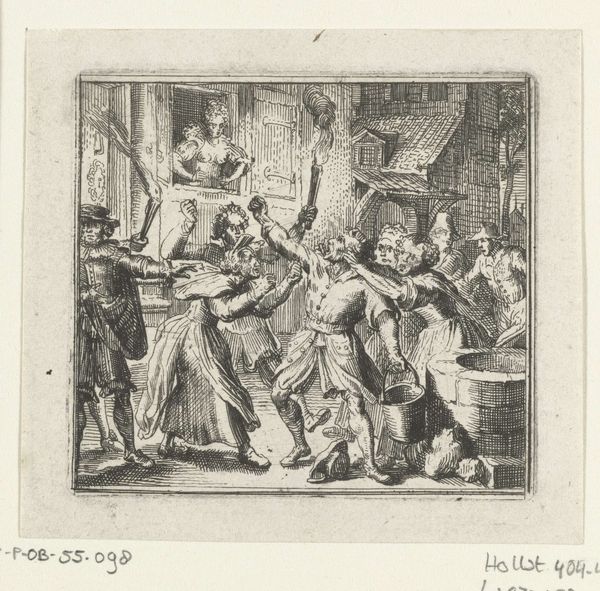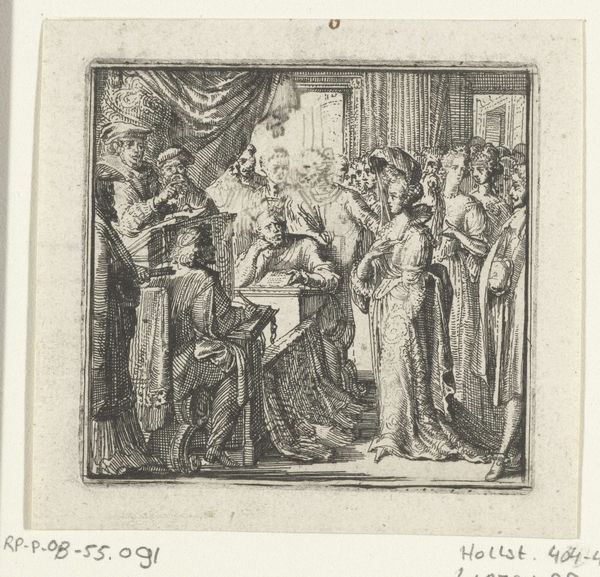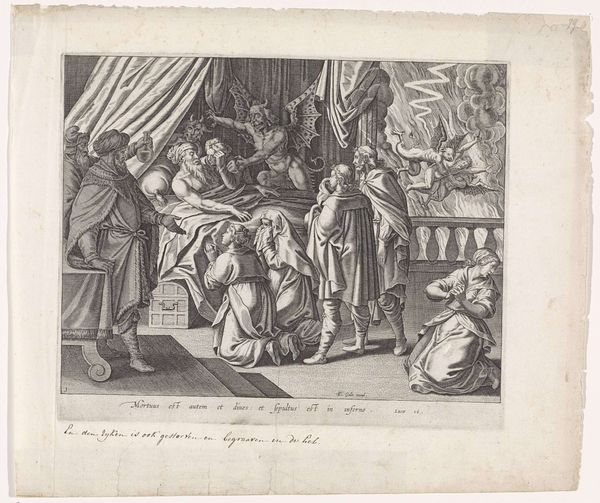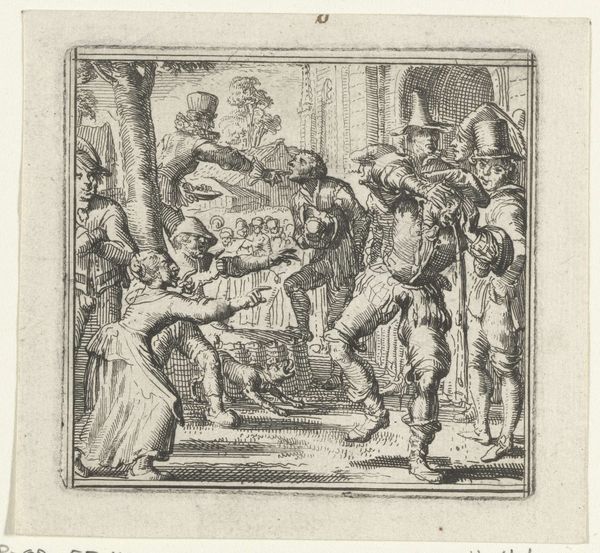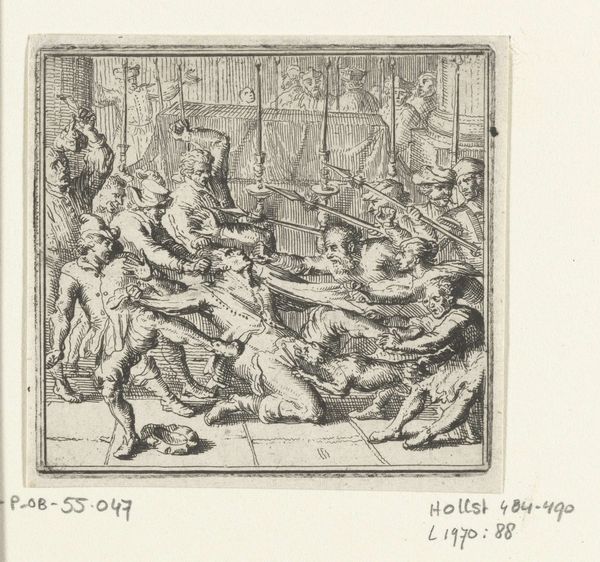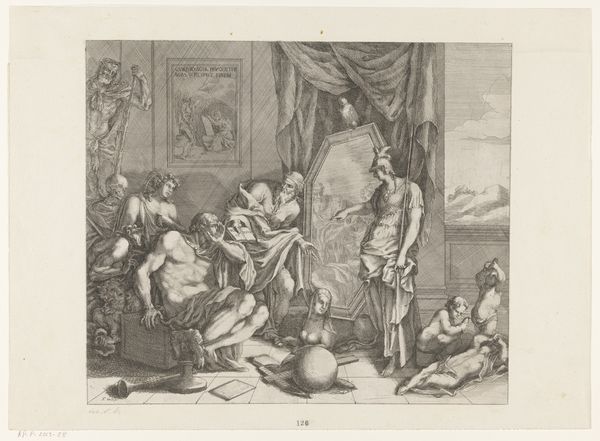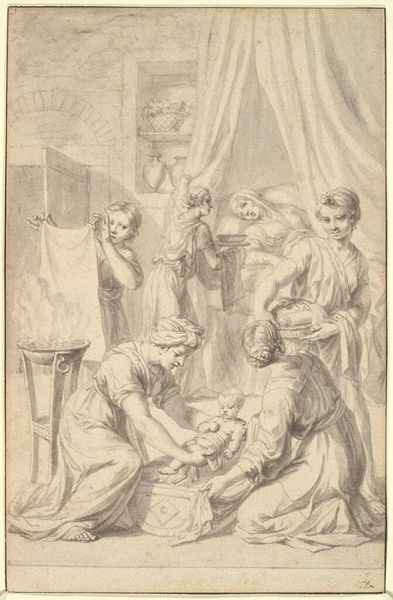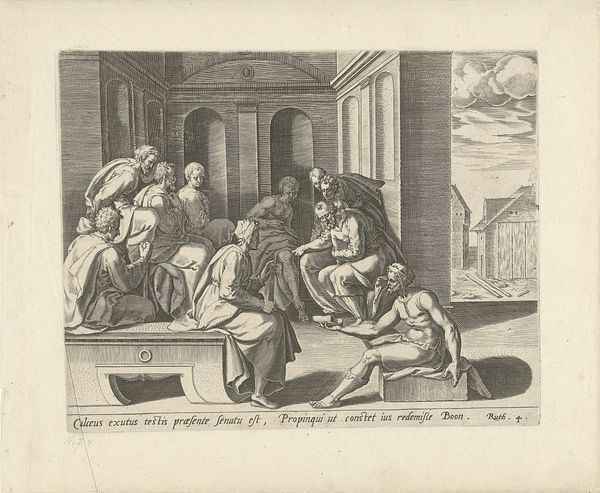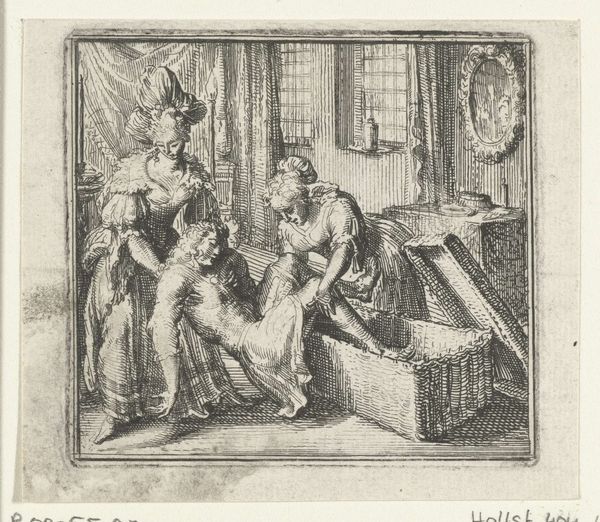
print, etching, engraving
#
narrative-art
#
baroque
# print
#
etching
#
figuration
#
line
#
history-painting
#
engraving
Dimensions: height 73 mm, width 78 mm
Copyright: Rijks Museum: Open Domain
Curator: Let's examine this print, "Illustration for Boccaccio's Decameron," crafted in 1697 by Romeyn de Hooghe. It's currently held here at the Rijksmuseum. Editor: Wow, just at first glance, what a chaotic and slightly unnerving little drama! The way everyone is gesticulating – it’s like a frozen explosion of emotion, yet rendered so precisely. Curator: Absolutely. The engraving and etching techniques, characteristic of Baroque line art, serve the narrative directly. We're observing De Hooghe's skillful application of the medium to visualize one of Boccaccio's intricate tales. The choice of printmaking democratized access to narrative art at the time, didn't it? Editor: Exactly! And that accessibility invites closer scrutiny. Look at the central figure reclining; is he supposed to be ill, or perhaps… dead? There's a baby being presented, a monk with a book—it's ripe for wild speculation, don’t you think? It is calling my inner storyteller out to play! Curator: Precisely. And the artist certainly makes use of material culture to embed this scene in the late 17th century. The figures’ attire, for instance, offers social clues about the characters’ class standing. Editor: Mmm, like theater, everything here is a costume, a prop—intended to advance the narrative. Speaking of storytelling, the glimpse through the doorway to what I can only assume are onlookers, further amplifies the feeling that we’re eavesdropping on something forbidden or crucial. It's staged, isn't it? Life as theater and vice versa! Curator: Very much so. And understanding these visual languages used throughout is fundamental to truly appreciating not just the piece but the broader societal values that De Hooghe, as a producer of images, was reinforcing and even questioning through his craft. Editor: In that moment, this image suddenly went from a curious historical tableau to a critical piece of visual commentary on class, culture, and, honestly, just wonderfully delicious human drama. Curator: Yes, it offers us an intriguing window into the artistic production and material culture of the Baroque era. Editor: Agreed, I think it does all of that while somehow still feeling intimately relatable. It really sings!
Comments
No comments
Be the first to comment and join the conversation on the ultimate creative platform.
